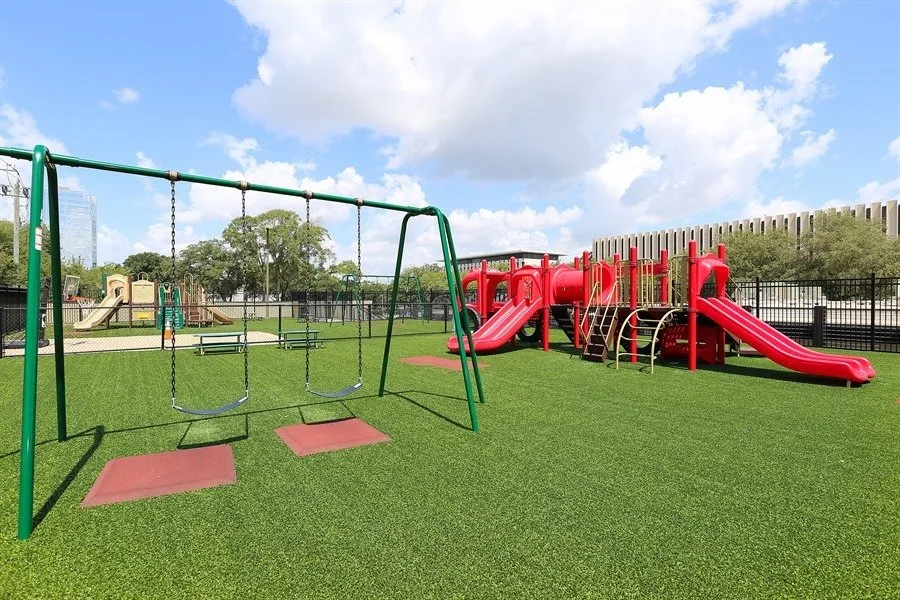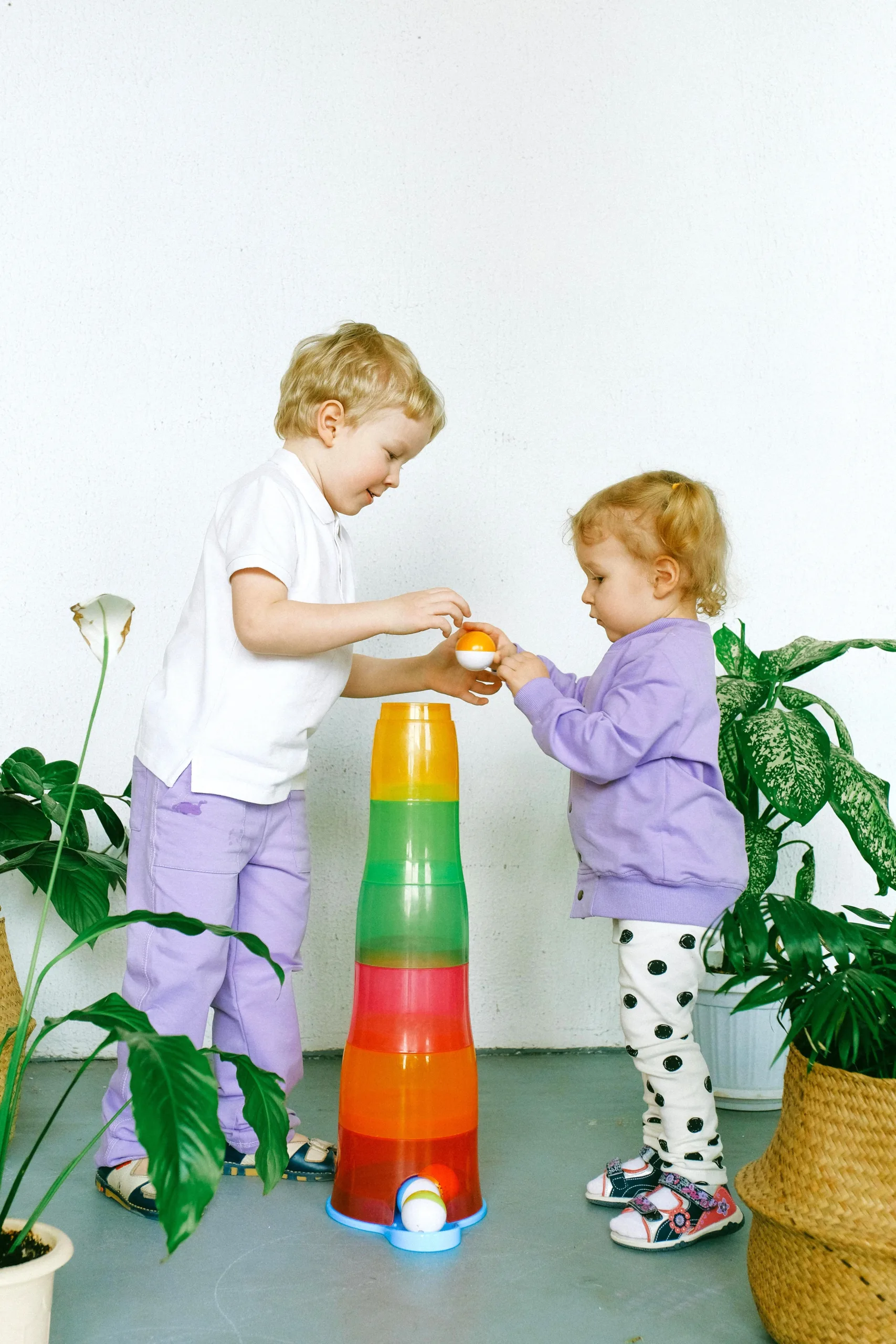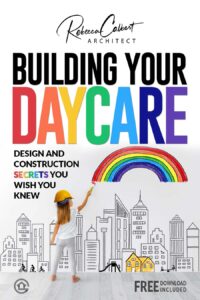What do kids need in a childcare building?
Creating an excellent environment for kids is easier than you think.
Don’t resign yourself to a mediocre daycare center design just because you are working with a tight budget. There are plenty of ways to maximize the positive impacts of a child’s physical surroundings without breaking the budget.
Before working with a designer, get clear about what is important to you and the children you’ll have in your care. Brainstorm and list all of the ideas of what you want to have in your classrooms. Then go back through the list and evaluate what items are a “NEED to have” vs. a “WANT to have”.
Likely, the things you need are the lesser expensive and more essential items.
Let’s take a look at what kids in a childcare building need:
1) Enough space to move around.
2) A need to feel comfortable.
3) To be able to accomplish tasks.
4) A sense of predictability.
As architects, as we design each new childcare center, we always make sure to meet these basic needs. It’s not difficult to imagine what children need, because they need the same things that we adults need. Go back over our list above, is there anything on the list that you would want to do without? Especially if it’s somewhere that you spend ten hours a day, five days a week?

Kids need enough space to move around.
Young children learn at lightning speed how to locate themselves and move around within space.
The first year is full of learning how to sit, crawl, walk, run, and play. There needs to be plenty of safe areas within their rooms to move around freely and learn these abilities.
When infants first learn to move, they scoot, slide, wiggle, and roll around on the floor. Then as their muscle strength grows, they begin to sit up on their own. When first sitting up, they generally look like a Weeble;
wobbling left to right and falling down over and over again. Because of all this falling, infants need a soft place to roll around and learn to sit up on. Using gym mats or padded flooring panels like these are ideal.
They are both inexpensive and washable.
When aging up to the Toddlers and older ages, classroom rugs need to be a low nap and rubber backed. Toddlers learning to walk need to do so without the extra hazard of tripping over a thick or slippery rug.
Kids need to have the freedom and the necessary space to move around without too many obstacles in their way.
If they are in areas that are too restrictive, they’ll likely start to fidget in their seats. It is essential not to limit their opportunities for movement.
Kids need to feel comfortable.
Imagine a place in your home that makes you feel comfortable. It’s not too dull, but not too stimulating either. It has a delicate balance to it, right? That balance between hard and soft surfaces, cool shadows and warm sunlight, and shelter from the weather with a view to the outside are what makes a comfortable place feel so good to us.
Like “Goldilocks and the Three Bears”, comfort is not too cold, not too hot, not too soft, and not too hard. It’s just right.
The concept behind creating a comfortable space is not to have everything be the exact same, but to have a balance between a variety of areas within the classroom. A child will be able to move towards active, bright, warm, and quiet areas of the room based on their mood and feelings on any given day or time of day.

Kids need to be able to accomplish tasks.
A child needs the ability to accomplish tasks independently as is developmentally appropriate for their age. They need to feel successful in getting around in their little piece of the world in order to gain confidence.
Set them up for success by designing as many winning tasks into their classroom as possible. Set the light switches to come on automatically, so they never get stuck in the dark. Set the hand-wash sinks and faucets down within their reach, so they can learn how to turn on the water, soap their hands, and wash. Do the same with paper towel holders and trash cans.
Install toilets that are smaller than the adult-sized ones at home, so they don’t need a step stool to get up and down. They will feel more successful and confident, but you will also eliminate the opportunity for stools to shift and fall accidents to occur.
A supportive environment helps children manage as many tasks as independently as possible.
Being able to retreat from the large group and have quiet time is a self-awareness task that each child needs the opportunity to learn. But in a childcare environment, a child is not afforded much privacy due to supervision requirements. To offset that, include window seats, small reading nooks, or padded furniture that can give them the respite they need when feeling overstimulated.
Kids need a sense of predictability.
Knowing their way around their school and their classroom helps children to offer children a sense of control. As you design each class, have the floorplan for each room be as similar as possible.
If restrooms are next to the classroom entrance for one room, have them be nearby for all classrooms.
If they are on the opposite side of the room, keep them consistently there for all classrooms. If child cubbies are right at the entry door, locate them near the entry door for all of the rooms.
This subtle way-finding will help each child feel a sense of predictability as they age up into each new room.
However you choose to address quiet space within the classroom, be continuous throughout so that it is easy for the child to know where they want to go for alone time.

Conclusion
As you reflect on what kids need in your childcare building, notice that there are no requirements for high-tech expensive building materials. There’s no need for marble counter-tops or decorative tile mosaics. Kids don’t care about those things. Young children don’t recognize designer tags, and they don’t care about high-priced solutions. They just sense what feels right, what makes them feel comfortable, where they can control as much of their surroundings as possible and have a sense of accomplishment in their lives. (Sounds a lot like what us adults need too!)
It’s to your advantage to stick with the basics. Keep it simple and focus on what matters most. Remember, classrooms need to be designed for the end-user, and that’s the children. Keep their needs the focus of your plans, and everything else will fall into place without breaking the bank.
-This article was written by Rebecca Calbert.
Rebecca is a licensed architect with over 30 years of experience. She owns and operates an architectural firm, Calbert Design Group, and educates her clients through the commercial real estate development process with online content at SaveOnBuilding.com. Rebecca’s “purpose” is to educate small business owners and protect them from what they don’t know.


